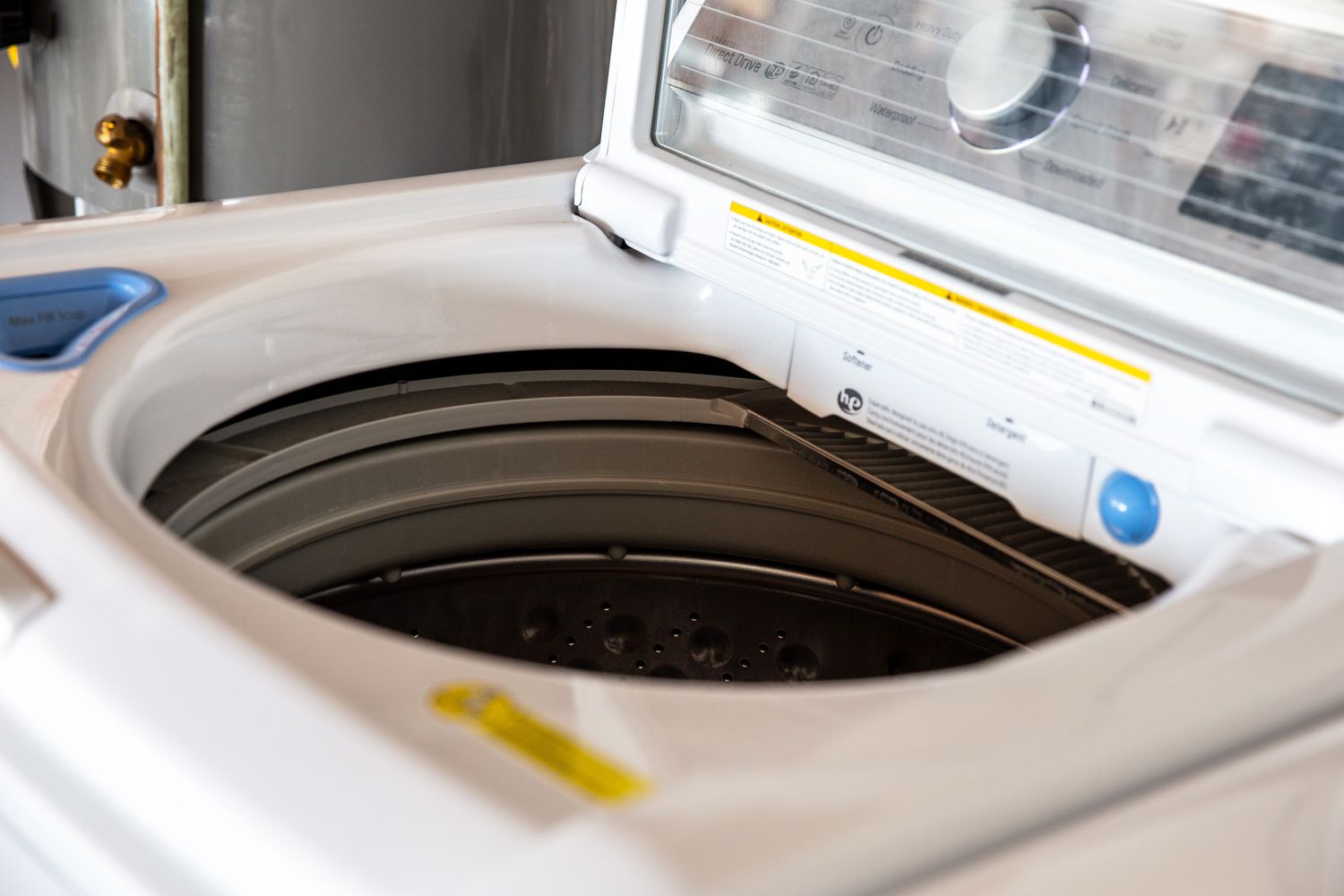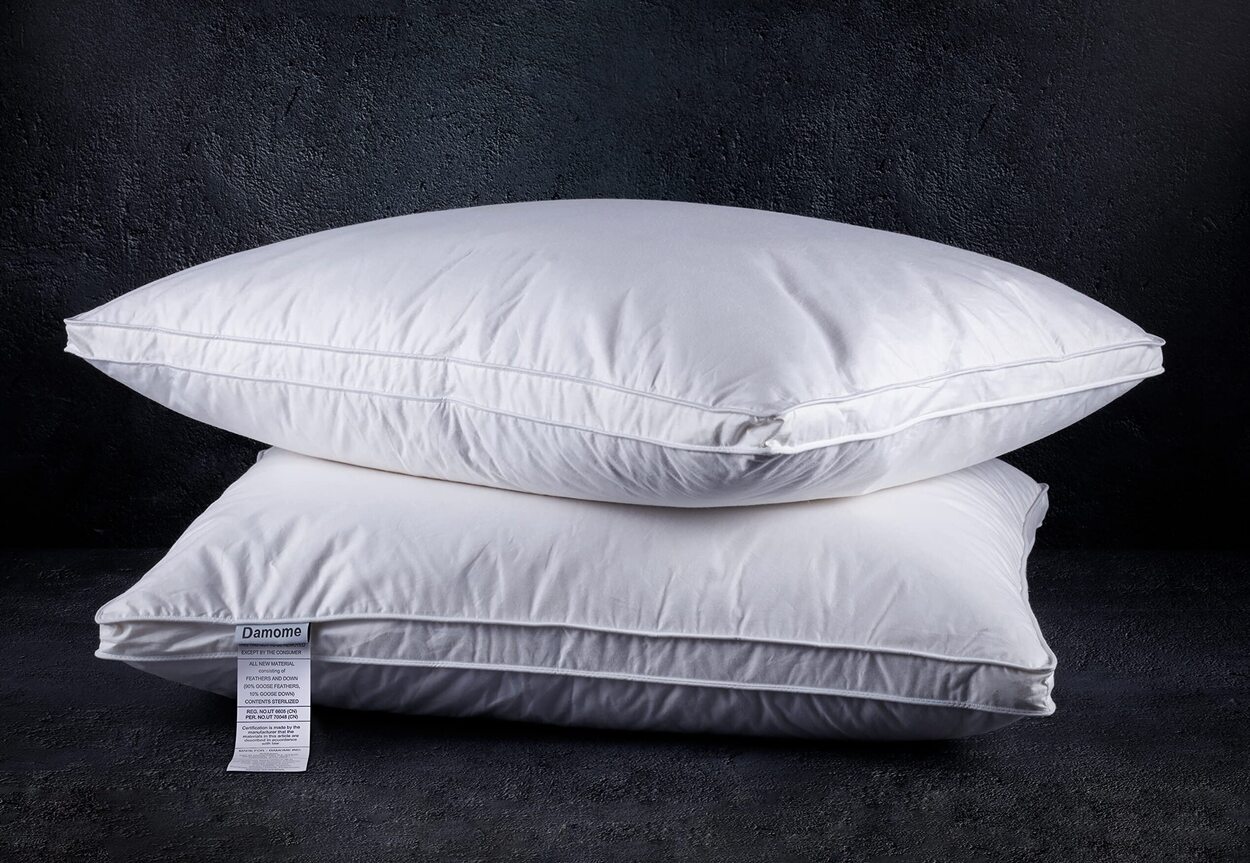Home>Interior Design>6 Ways Your Pillow Is Ruining Your Sleep Quality – And Expert Advice On Fixing It


Interior Design
6 Ways Your Pillow Is Ruining Your Sleep Quality – And Expert Advice On Fixing It
Modified: January 19, 2024
Discover the 6 ways your pillow may be hindering your sleep quality and learn expert advice on how to resolve it
(Many of the links in this article redirect to a specific reviewed product. Your purchase of these products through affiliate links helps to generate commission for Storables.com, at no extra cost. Learn more)
Introduction
Getting a good night’s sleep is essential for our overall well-being, and having the right pillow can make all the difference. However, many people don’t realize that their pillow may be ruining the quality of their sleep. From the filling material to the age and condition of the pillow, there are several factors that can negatively impact your sleep comfort. Fortunately, there are expert solutions to fix these issues and ensure you get the restful sleep you deserve.
In this article, we will explore six common ways your pillow might be ruining your sleep quality and provide expert advice on how to address these problems. By understanding these factors and implementing the recommended solutions, you can improve your sleep environment and wake up feeling refreshed and rejuvenated.
Key Takeaways:
- Choose the right pillow filling material and adjust height and firmness to align with your sleep position for optimal comfort and support, promoting better sleep quality and overall well-being.
- Regularly maintain and clean your pillow, replace it every 1-2 years, and invest in hypoallergenic options to create a healthy sleep environment, ensuring restful and rejuvenating nights.
Pillow Filling Material
The filling material of your pillow plays a crucial role in determining its comfort and support. Different filling materials have varying levels of firmness, breathability, and durability. However, if you’re using the wrong filling material for your sleep preferences, it can negatively impact your sleep quality.
One common issue is using a pillow with a filling material that is too firm or too soft for your liking. If your pillow is too firm, it can put excessive pressure on your neck and shoulders, leading to discomfort and potential pain. On the other hand, if your pillow is too soft, it may not provide enough support to align your spine properly, resulting in poor sleep posture.
Furthermore, some filling materials, such as down feathers, can be allergenic and trigger allergic reactions in sensitive individuals. This can lead to congestion, sneezing, and restless sleep due to discomfort. It’s essential to consider hypoallergenic alternatives if you suspect that your pillow filling material is contributing to your allergy symptoms.
To fix these issues, it’s recommended to choose a pillow with a filling material that suits your sleep preferences and provides adequate support. Memory foam pillows are popular due to their ability to contour to the shape of your head and neck, offering optimal support and alignment. Latex pillows are also a good choice as they provide a balance of comfort and support, while being hypoallergenic and resistant to dust mites.
Ultimately, finding the right pillow filling material for your needs might require some experimentation. Pay attention to how your body responds to different types of pillows and adjust accordingly until you find the perfect balance of comfort and support for a good night’s sleep.
Pillow Height and Firmness
The height and firmness of your pillow are crucial factors that can greatly affect your sleep quality. A pillow that is either too high or too low can lead to discomfort and improper spinal alignment, resulting in restless nights and potential neck and shoulder pain.
If your pillow is too high, it can cause your neck to be strained and tilted upward, which can lead to neck pain and stiffness. On the other hand, if your pillow is too low, it can cause your neck to be unnaturally angled downward, putting strain on your neck muscles and leading to discomfort.
Similarly, the firmness of your pillow is essential for providing the right level of support. A pillow that is too firm can create pressure points on your neck and shoulders, causing discomfort and restless sleep. Conversely, a pillow that is too soft may not provide enough support, leading to poor spinal alignment and potential pain.
To find the optimal height and firmness for your pillow, consider your sleep position. If you sleep on your side, you’ll likely need a higher pillow to keep your head and neck aligned with your spine. A medium-firm to firm pillow is ideal for side sleepers, as it provides the necessary support. If you sleep on your back, a medium-firm pillow that supports the natural curve of your neck is recommended. For stomach sleepers, a softer, lower-profile pillow is advisable to prevent excessive neck strain.
Experiment with different pillow heights and firmness levels to determine what works best for you. Remember, everyone’s preferences may vary, so it’s important to consider your comfort and support needs to ensure a restful night’s sleep.
Pillow Age and Condition
The age and condition of your pillow can significantly impact your sleep quality. Over time, pillows can become worn out, losing their shape, support, and hygiene. If you’ve been using the same pillow for years without replacement, it may be time to assess its condition and consider an upgrade.
As pillows age, they accumulate dirt, sweat, dead skin cells, and dust mites. This not only affects the cleanliness of your pillow but can also trigger allergies and respiratory issues. Additionally, an old and flattened pillow loses its ability to provide proper support and alignment for your head and neck.
If your pillow feels lumpy, uneven, or shows signs of sagging, it’s a clear indication that it has reached the end of its lifespan. Sleeping on such a pillow can lead to discomfort, restless nights, and recurring neck pain. It’s essential to replace your pillow every 1-2 years to maintain optimal sleep comfort and hygiene.
To prolong the lifespan of your pillow, consider using a pillow protector or pillowcase that is easy to wash and keeps your pillow free from stains, allergens, and dust mites. Regularly fluffing and airing out your pillow can also help maintain its shape and freshness.
When shopping for a new pillow, consider investing in high-quality options that offer good support, durability, and hypoallergenic properties. Memory foam pillows and latex pillows are known for their longevity and ability to bounce back to their original shape. Look for pillows with removable covers for easy cleaning and maintenance.
Remember, a pillow is an important part of your sleep environment, and its age and condition can significantly impact the quality of your rest. By replacing your old pillow with a fresh and supportive one, you can ensure a more comfortable and rejuvenating sleep experience.
Tip: Replace your pillow every 1-2 years to ensure proper support and hygiene. Look for one that suits your sleeping position and provides adequate neck support.
Pillow Allergens and Irritants
Many people overlook the potential allergens and irritants that can be present in their pillows, which can have a negative impact on sleep quality, particularly for those with allergies or sensitivities.
Dust mites, microscopic creatures that feed on dead skin cells, are a common allergen found in pillows. Dust mite allergens can trigger symptoms such as sneezing, watery eyes, and congestion, leading to disturbed sleep and discomfort. Additionally, mold and mildew can thrive in damp environments, and if your pillow is not properly ventilated or exposed to moisture, it can become a breeding ground for these allergens.
Aside from allergens, certain pillow materials, such as synthetic fibers or chemicals used in manufacturing, can release volatile organic compounds (VOCs), which may cause irritation or respiratory issues for sensitive individuals. This can result in difficulty breathing, coughing, or throat irritation during sleep.
To mitigate these issues, it’s crucial to choose pillows that are hypoallergenic and resistant to dust mites. Look for pillows made of natural materials like organic cotton or bamboo, as these are less likely to harbor allergens. Consider using allergen-proof pillow covers or cases to create an extra barrier against dust mites and allergens.
Regularly washing your pillowcase and pillow cover in hot water, as well as drying them thoroughly, can help eliminate dust mites and minimize the presence of other allergens. Additionally, exposing your pillow to fresh air and sunlight periodically can inhibit the growth of mold and mildew.
If you have severe allergies or respiratory conditions, you may want to consider investing in a specialized allergen barrier pillow or consulting with a medical professional for personalized advice.
By addressing and minimizing potential allergens and irritants in your pillow, you can create a healthier sleep environment and enjoy more restful nights, free from discomfort and allergy symptoms.
Pillow Support and Alignment
The support and alignment provided by your pillow are crucial factors in ensuring a good night’s sleep. Proper support ensures that your head, neck, and spine are properly aligned, reducing strain and promoting optimal sleep posture. If your pillow does not provide adequate support or alignment, it can lead to discomfort, pain, and restless sleep.
One common issue is using a pillow that is too soft or lacks firmness. A pillow that is too soft may not provide enough support, causing your head to sink too far into the pillow and leading to poor spinal alignment. This can result in neck and shoulder pain, as well as disrupted sleep. On the other hand, using a pillow that is too firm can cause excessive pressure on sensitive areas, leading to discomfort and improper alignment.
The ideal pillow should support the natural curve of your neck and ensure that your head is in line with your spine, regardless of your sleep position. For side sleepers, a pillow with a higher loft can help keep the head and neck properly aligned. Back sleepers will benefit from a medium-firm pillow that supports the natural curve of the neck. Stomach sleepers should consider using a softer, flatter pillow to avoid straining the neck.
It’s important to note that your pillow should be adjustable to accommodate any changes in your sleep position or preference. Many pillows offer options to add or remove filling material to adjust the height and firmness, allowing you to customize the support and alignment to your needs.
Additionally, using proper positioning aids, such as placing a pillow between your knees if you sleep on your side or using a body pillow for added support, can further enhance your sleep posture and alignment.
By ensuring that your pillow provides adequate support and alignment, you can alleviate discomfort, reduce the risk of developing pain or stiffness, and promote a restful night’s sleep.
Pillow Maintenance and Cleaning
Maintaining proper hygiene and cleanliness of your pillow is essential for a healthy and comfortable sleep environment. Over time, pillows can accumulate sweat, body oils, dead skin cells, and dust mites, which can affect their freshness and contribute to sleep issues and allergies.
Regularly washing your pillowcase and pillow cover is the first step in maintaining cleanliness. It is recommended to wash them at least once a week using hot water to kill any bacteria or allergens that may be present. Be sure to follow the care instructions provided by the manufacturer to ensure proper cleaning and to promote the longevity of your pillow.
While pillowcases and covers can be easily cleaned, the pillows themselves require special attention. Some pillows can be machine-washed, but it’s important to check the label and follow the specific washing instructions provided. For pillows that cannot be machine-washed, spot-cleaning is recommended.
To maintain the shape and fluffiness of your pillow, it’s crucial to regularly fluff and air it out. This helps redistribute the filling and prevent it from becoming lumpy or compressed. Additionally, exposing your pillows to fresh air and sunlight can help eliminate any moisture and inhibit the growth of mold and mildew.
Consider using pillow protectors or pillowcases specifically designed to prevent allergens and dust mites from accumulating. These protective covers act as an additional barrier and can be easily washed and changed, ensuring overall cleanliness and reducing the risk of allergic reactions.
It’s important to note that pillows have a lifespan and should be replaced every 1-2 years, or when they lose their shape and support. If your pillow is discolored, flattened, or no longer provides adequate comfort, it’s a clear sign that it’s time to invest in a new one.
By regularly maintaining and cleaning your pillows, you not only ensure their longevity but also create a clean and healthy sleep environment, promoting better sleep quality and overall well-being.
Conclusion
Your pillow plays a vital role in determining the quality of your sleep. By understanding the factors that can impact your sleep comfort and implementing expert advice, you can address common issues and ensure a restful night’s sleep.
Consider the filling material of your pillow and choose one that provides the right level of support and comfort for your needs. Pay attention to the height and firmness of your pillow, ensuring that it aligns with your sleep position and promotes proper spinal alignment. Regularly assess the age and condition of your pillow, replacing it when necessary to maintain optimal support and hygiene.
Be mindful of potential allergens and irritants in your pillow, opting for hypoallergenic materials and cleaning your pillow regularly to minimize the presence of dust mites and allergens. Ensure that your pillow provides adequate support and alignment, adjusting the height and firmness as needed for your sleep position.
Maintaining the cleanliness of your pillow through regular washing, fluffing, and airing out is crucial for a healthy sleep environment. Consider using protective covers and pillowcases to prevent allergens from accumulating.
In conclusion, by taking the time to assess your pillow and make necessary adjustments, you can significantly improve your sleep quality. Investing in a pillow that meets your needs and maintaining its cleanliness and condition will lead to more restful and rejuvenating nights, ensuring that you wake up refreshed and ready to tackle the day ahead.
Frequently Asked Questions about 6 Ways Your Pillow Is Ruining Your Sleep Quality – And Expert Advice On Fixing It
Was this page helpful?
At Storables.com, we guarantee accurate and reliable information. Our content, validated by Expert Board Contributors, is crafted following stringent Editorial Policies. We're committed to providing you with well-researched, expert-backed insights for all your informational needs.















0 thoughts on “6 Ways Your Pillow Is Ruining Your Sleep Quality – And Expert Advice On Fixing It”